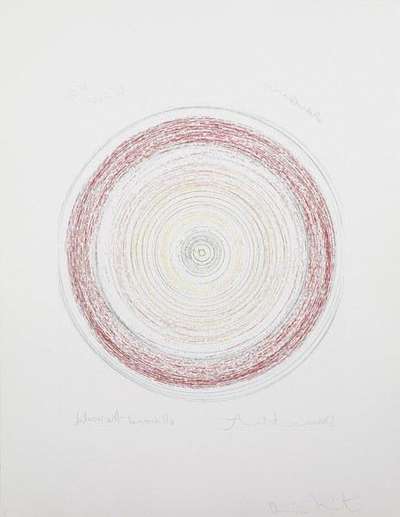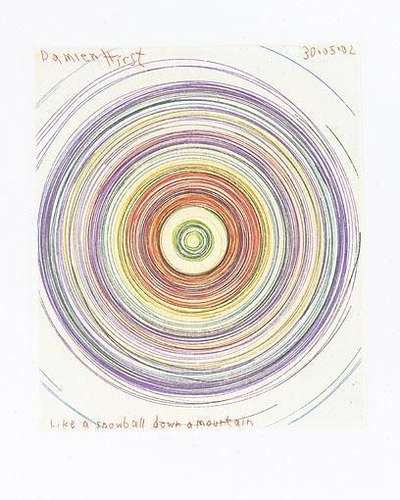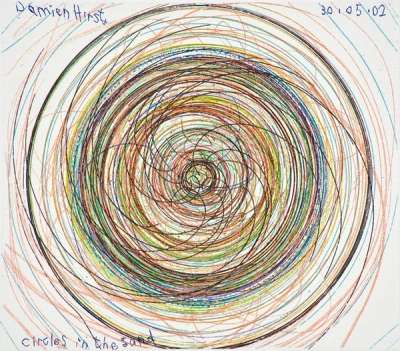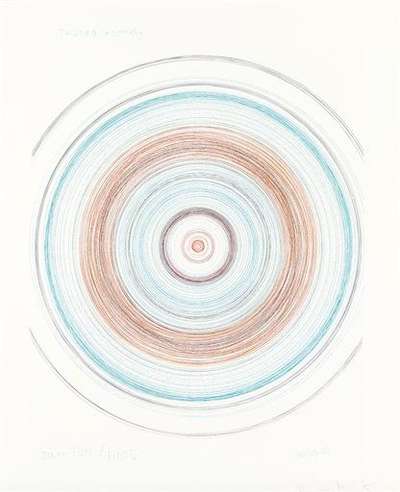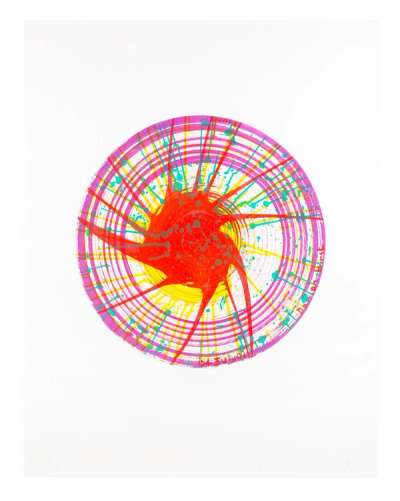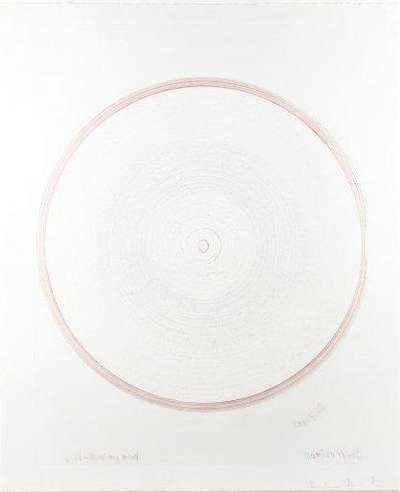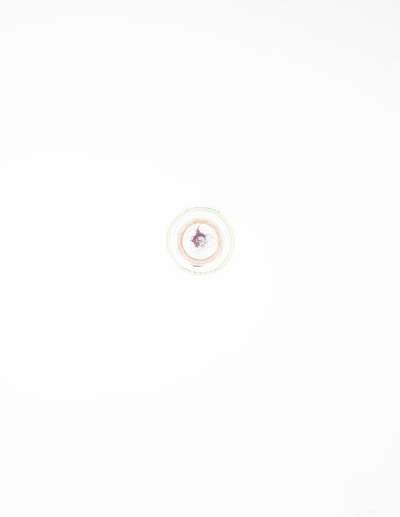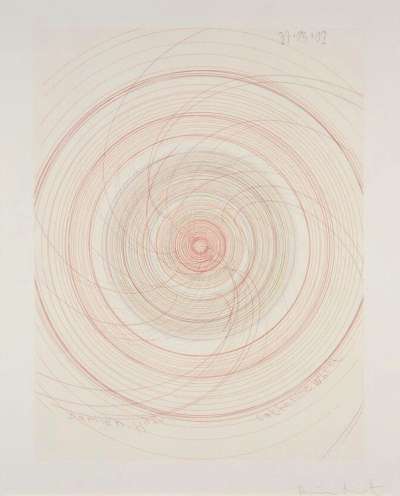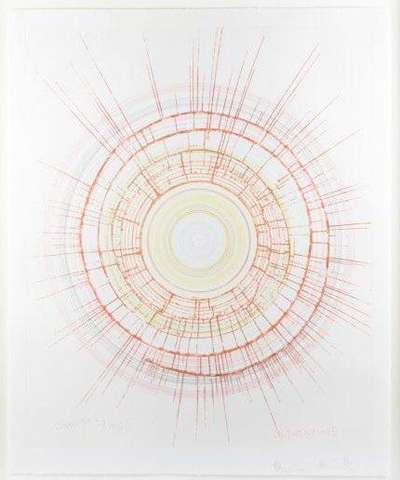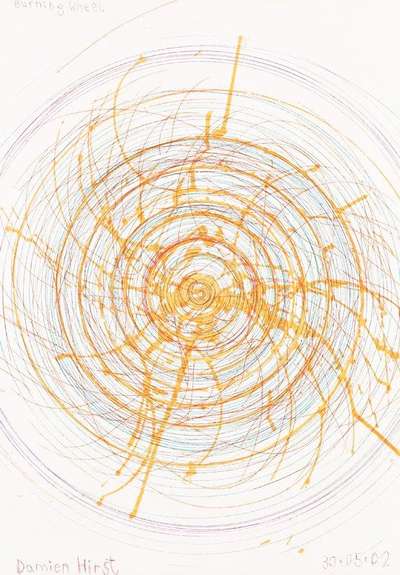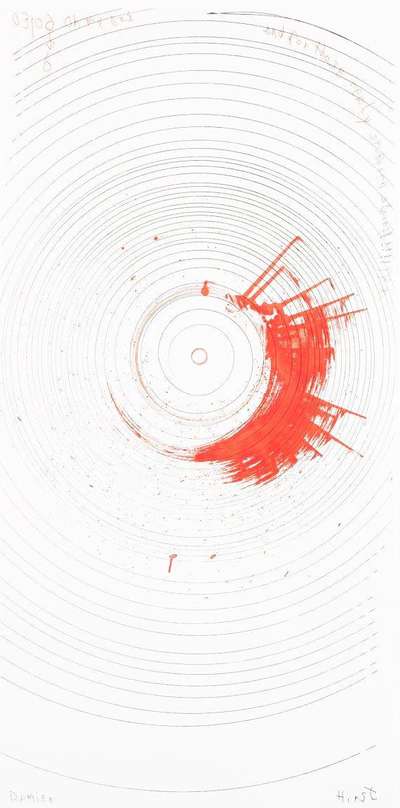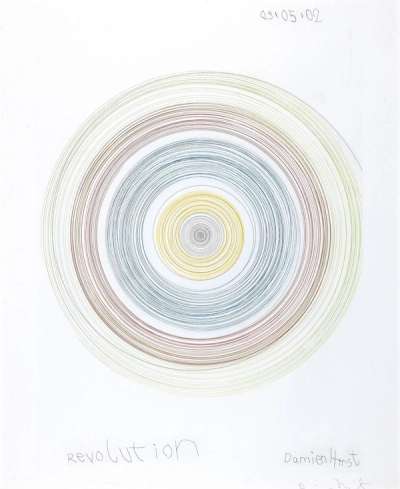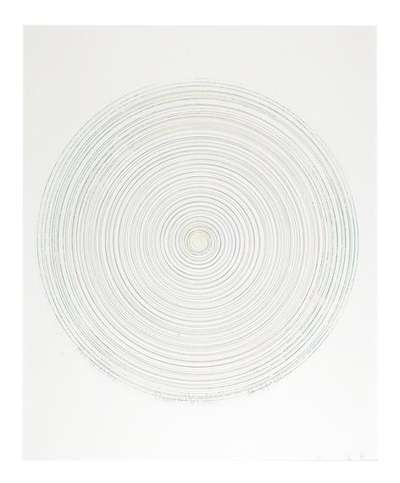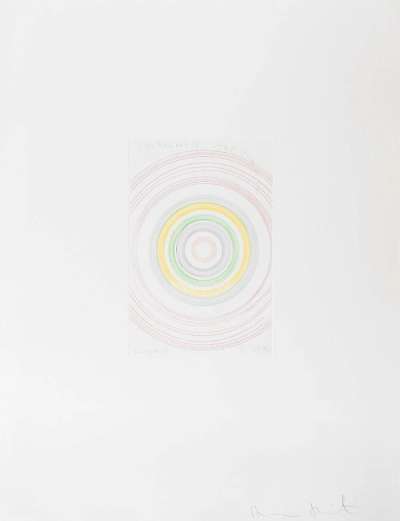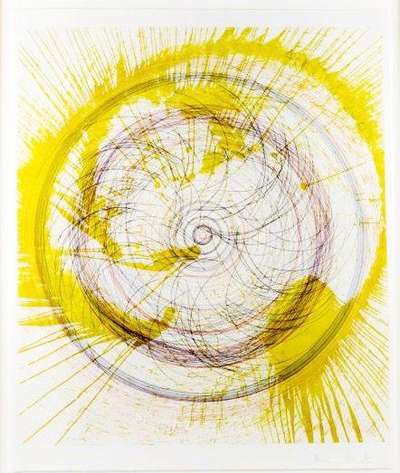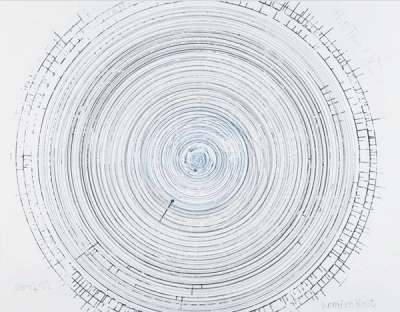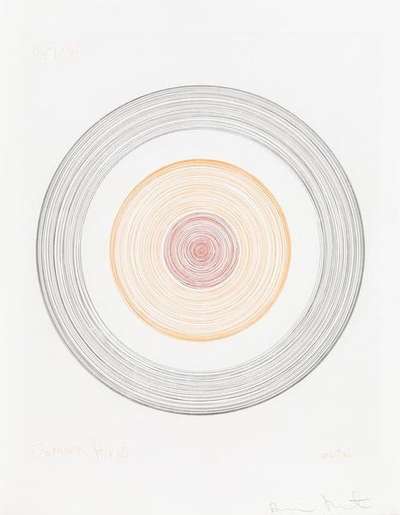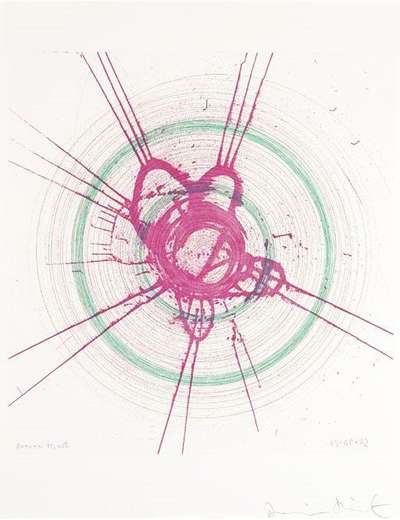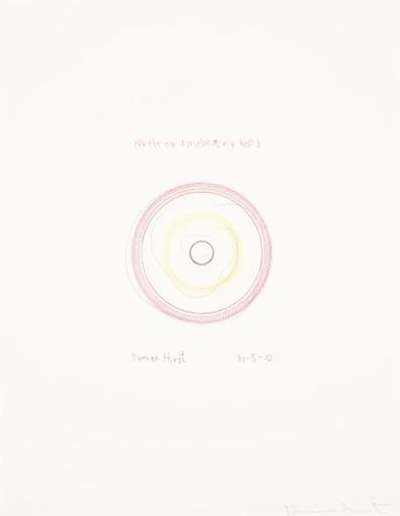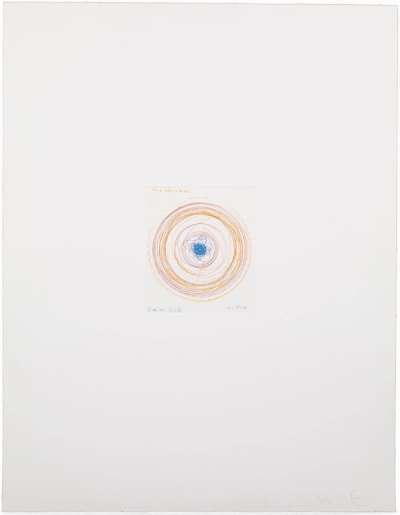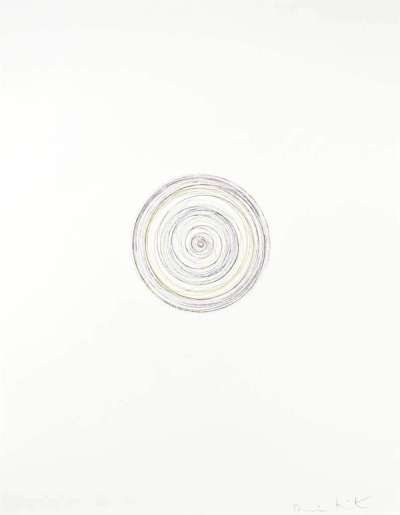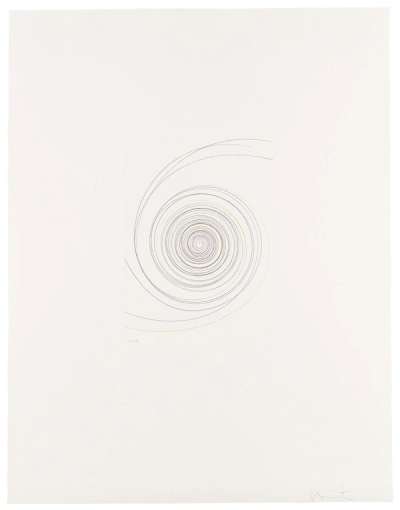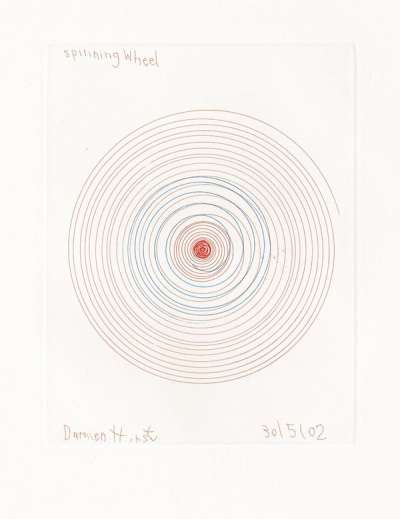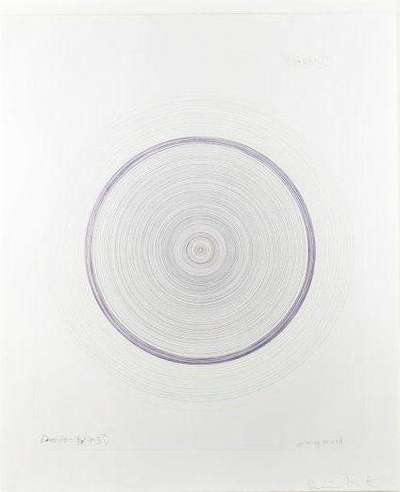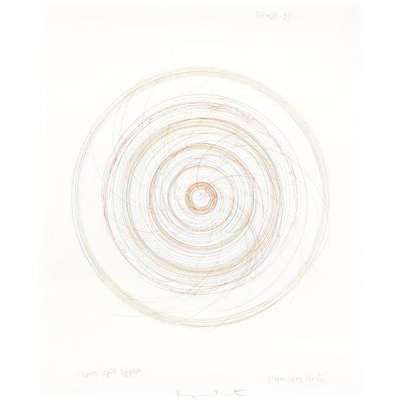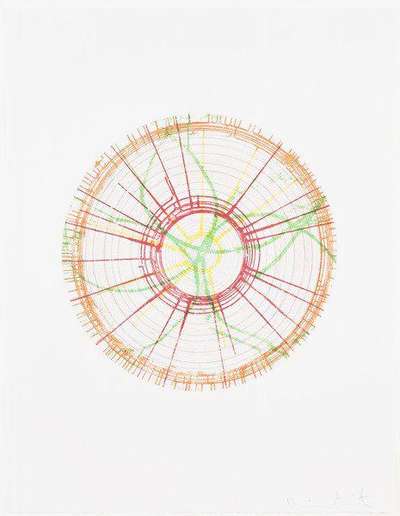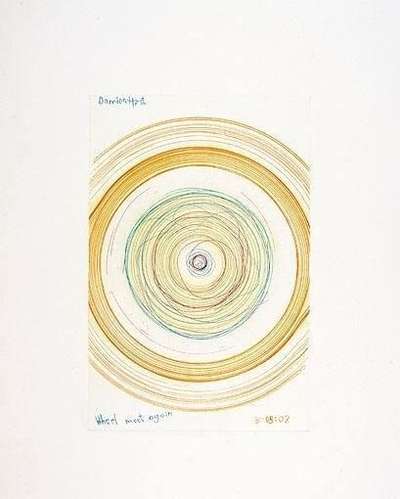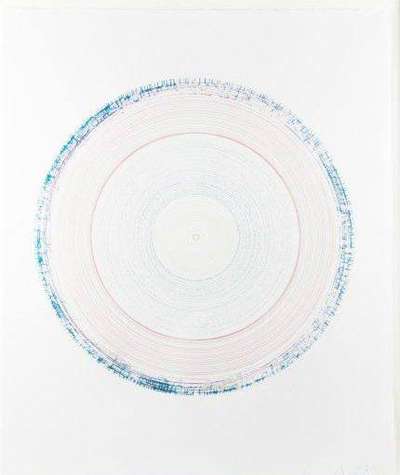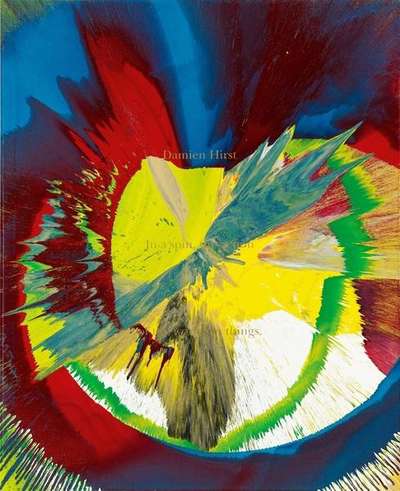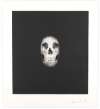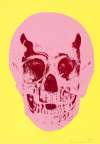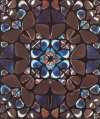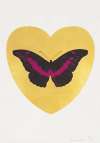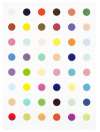In
A Spin
Damien Hirst’s 2002 In A Spin, The Action of the World Upon Things, collects 37 etchings across two portfolios. Featuring fine concentric circles, the prints convey the dynamism with which they were created: whilst spinning the copper plates Hirst drew spirals with any sharp object to hand.
Damien Hirst In A Spin For sale
In A Spin Value (5 Years)
With £6343 in the past 12 months, Damien Hirst's In A Spin series is one of the most actively traded in the market. Prices have varied significantly – from £629 to £14976 – driven by fluctuations in factors like condition, provenance, and market timing. Over the past 12 months, the average selling price was £1268, with an average annual growth rate of -2.73% across the series.
In A Spin Market value
Auction Results
| Artwork | Auction Date | Auction House | Return to Seller | Hammer Price | Buyer Paid |
|---|---|---|---|---|---|
 Wheel Meet Again Damien Hirst Signed Print | 19 Sept 2025 | Phillips London | £638 | £750 | £1,050 |
 Spinning Wheel Damien Hirst Signed Print | 3 Sept 2025 | Lama | £510 | £600 | £800 |
 I Get Around Damien Hirst Signed Print | 13 May 2025 | Lama | £893 | £1,050 | £1,450 |
 Billy Mill Roundabout Damien Hirst Signed Print | 18 Dec 2024 | Wright | £1,488 | £1,750 | £2,400 |
 Tie A Yellow Ribbon Round the Old Oak Tree Damien Hirst Signed Print | 18 Dec 2024 | Wright | £1,488 | £1,750 | £2,400 |
 Ring A Ring A Roses Damien Hirst Signed Print | 19 Jun 2024 | Tate Ward Auctions | £638 | £750 | £1,000 |
 In A Spin Damien Hirst Signed Print | 15 May 2024 | Tate Ward Auctions | £638 | £750 | £1,000 |
 Liberty Damien Hirst Signed Print | 26 Mar 2024 | Christie's London | £1,445 | £1,700 | £2,250 |
Sell Your Art
with Us
with Us
Join Our Network of Collectors. Buy, Sell and Track Demand
Meaning & Analysis
Hirst’s In A Spin, The Action of the World Upon Things, is a collection of 37 prints, constructed from concentric circles and organic painterly lines. The lines rendered in many of the prints are regular and very tightly rendered, and thus convey a great sense of movement and speed.
The In A Spin, The Action Of The World Upon Things portfolios are based on Hirst’s famous spin paintings, a series of works that the artist began producing in 1995. To create the original spin paintings Hirst attached a large circular canvas to a spin machine in his studio, then threw paint onto the spinning canvas to create abstract painterly marks. The etchings in this portfolio were produced using a very similar technique, attaching copper plates to the machine, and drawing the spiral lines with needles, screwdrivers, and other sharp tools as they spun.
The spin paintings began as a collaboration between Hirst and Angus Fairhurst in 1993 at the iconic event ‘A Fete Worse than Death,’ where the two dressed as clowns and produced the first spin paintings. The curator Gregor Muir has recalled: “Using an inverted electric drill and a piece of wood onto which they could fasten sheets of paper, Fairhurst and Hirst set up a spin painting stall – an idea borrowed from a once popular children’s game using painting and an old record player cranked up to 78rpm. A spin painting cost £1 to produce and was signed by both artists on the reverse. In Hirst’s case, the idea proved too useful to be left behind, resulting in his subsequent ‘Spin Paintings’.”
The second half of the series’ title, ‘The Action of the World on Things’ derives from a phrase the artist coined in 1999 when he was clarifying the origins of his spot paintings. He distinguished two aspects of his work: “an involvement with death and decay, and ideas and life: the action of the world on things exists somewhere, and the colour exists somewhere else. And it’s fantastic.” In A Spin, The Action Of The World Upon Things is said to unite these two elements of Hirst’s work.
